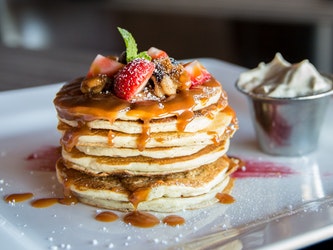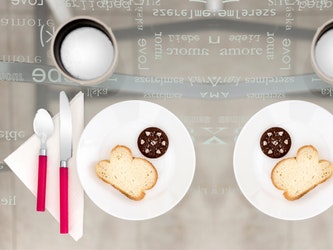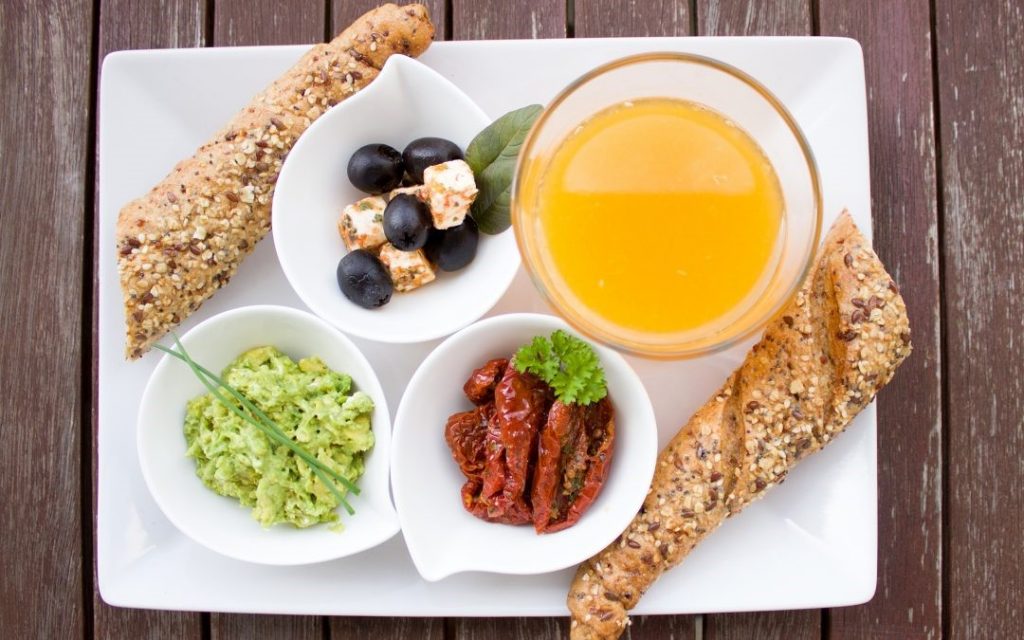
Featured Image CC by 0 Public Domain, via Pexels.
Breakfast is the most important meal of the day. But not all breakfast foods are equal. The best breakfasts are not only tasty but pack a powerful nutritional punch. Here are some suggestions to help you get what you need to make it through the morning feeling full and energetic. Also, we’ll tell you what you absolutely, positively should never do for breakfast.
What is a Healthy Breakfast?
Nutritionist Adele Davis famously said, “Eat breakfast like a king, lunch like a prince, and dinner like a pauper.” Experts recommend that breakfast should make up 15% to 25% of our daily calorie intake. That means between 300 and 500 calories for women and 375 to 625 calories for men.
But they shouldn’t be just any calories. Your body needs a balance of protein, fat, and carbohydrates to get you through the morning. A breakfast survey done by The Greatist shows that many fitness and nutrition experts prefer lean proteins and fruit to start their day. Oatmeal is another popular choice. In addition, we should all go easy on the sugar.
Breakfast Proteins and Fats
Protein and healthy fats are essential for avoiding that bad midmorning decision. You know, the office donut or the pastry add-on at the coffee shop. Protein and fat burn slowly and keep you feeling full. But not all proteins are the best thing to eat first thing in the morning. Here are some breakfast proteins to try, and some to avoid.
Try these
Beans are high in antioxidants, fiber, protein, B vitamins, iron, magnesium, potassium, copper, and zinc. Canned beans can be high in sodium, so either rinses them off or look for a low-sodium version.
Nuts are high in protein, fatty acids, B vitamins, and fiber. But they’re also high calorie, so eat them sparingly.
Tofu has a neutral taste, which means that you can have it sweet, like in a smoothie, or savory. Tofu contains all eight essential amino acids, as well as calcium, iron, and other nutrients. You can eat tofu as is, maybe drizzled with olive oil or balsamic. You can also grill or fry it for a savory treat.
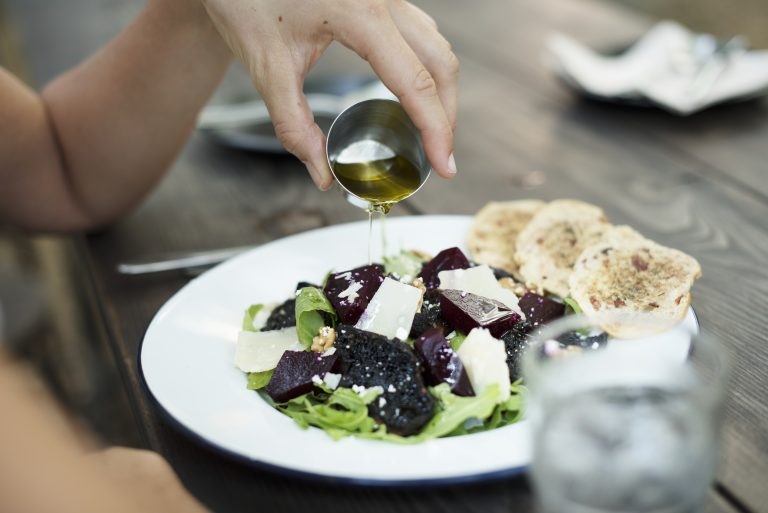
Image CC0 In the Public Domain, via Pexels.
A lot of people love cheese. And in moderate amounts, it’s an appetizing way to get your protein. But, like nuts, many kinds of cheese have a lot of calories and fat. Some cheeses, like feta, parmesan, goat cheese, and mozzarella, are naturally lower in calories and fat. Plus, they go great with breakfast veggies.
Eggs have gotten bad press for their cholesterol content. But if you’re not watching your cholesterol, they can be a tasty high protein, low fat, low-calorie way to start your day.
What about protein powder? Protein powder can be an excellent way to increase your protein intake. But beware. Many protein powders are high in sugar, sodium, or both. Also, many contain artificial sweeteners. If you want to try protein powder, look for one that is either unsweetened or sweetened with a natural, low-calorie sweetener like stevia.
As for fats, avocado provides heart-healthy omega three fatty acids, and the potent antioxidant Vitamin E. It’s also surprisingly high in fiber. Try fresh avocado with a bit of balsamic vinegar, lemon juice, or a pinch of salt on top. In addition, you might try drizzling olive oil over tofu or raw vegetables to add some heart-healthy fats to your diet.
Avoid These
Processed breakfast meats like sausages and bacon. Processed meats are very high in sodium. Also, they contain nitrates and cholesterol. And that’s bad for your heart. Unfortunately, their vegetarian alternatives are also high in sodium.
Breakfast Fruits: The Best and The Bittersweet
Fruit is a natural breakfast choice. And we should all be eating more fruits and vegetables. But all by themselves, they won’t keep you full. Try these simple but powerful ways of adding fruit to your breakfast.
In a Smoothie
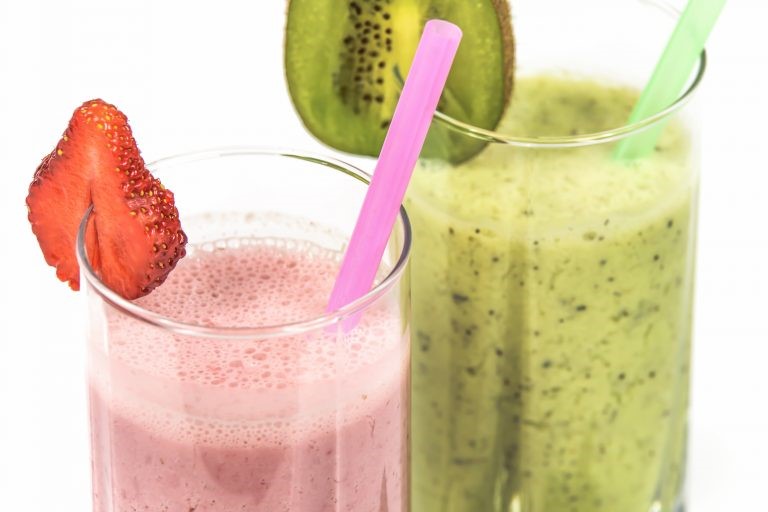
The image is CC0 In the Public Domain, by Photo Mix, via Pexels.
How about a nice milkshake for breakfast? Well, it’s not exactly your soda shop favorite, but a smoothie can come very close. You can whip together a simple, powerfully healthy breakfast of unsweetened frozen fruit, unsweetened protein powder, and a bit of your favorite spice — like cinnamon or ginger. Or you can get fancy with recipes like these,. You can put silken tofu in your smoothie, or substitute fresh fruit for frozen. Your imagination is the limit. Making your own breakfast smoothie can be an excellent way to get your daily 5 or More. But beware of fast food and restaurant smoothies, as they tend to ramp up the sugar, fat, and calories.
Fresh Fruit with Yogurt
Pairing fresh fruit with nonfat or low-fat plain yogurt gives you a healthy balance of fruit and protein that will keep you satisfied. For variety, try vegetables instead of fruit.
What? Salad for Breakfast?
Why not? Cucumbers, sliced carrots, celery, olives, tomatoes, and sliced peppers make for a low calorie, high fiber, vitamin-packed start. You can drizzle your veggies with olive oil and sprinkle with salt and pepper, or any other spices that appeal to you. Also, you can pair your veggies with olives, tofu, cheese, and more. Savory breakfast items including vegetables, beans, and cheese are common in many parts of the world. So give it a try!
Avoid These Fruits and Vegetables
Avoid canned fruit packed in syrup or juice. This adds a lot of sugar and calories, and it’s just not necessary. Try water packed fruit, or, even better, fresh or unsweetened frozen fruit. Also, canned vegetables sometimes have a lot of salt, so check your labels carefully.
Cereals, Grains, and Bread
Cereal and toast are practically synonymous with breakfast. And, for most people, cereals, grains, and pieces of bread are a healthy and tasty addition to breakfast. But some grains are healthier than others. And, as always, ingredients and preparation are key.
Whole Grains
Whole grains don’t just mean whole wheat bread for your toast. It means any grain, when consumed whole, with the bran, germ, and endosperm. Including all the parts of the grain adds nutritional value, including vitamins and fiber. You can, of course, have your whole grain bread. But you can also enjoy your grains cooked as a hot cereal, and either sweet or savory. Some grains, like barley and quinoa, are high in protein as well. A bowl of rice for breakfast? It’s common in many of the world’s healthiest places, including Japan.
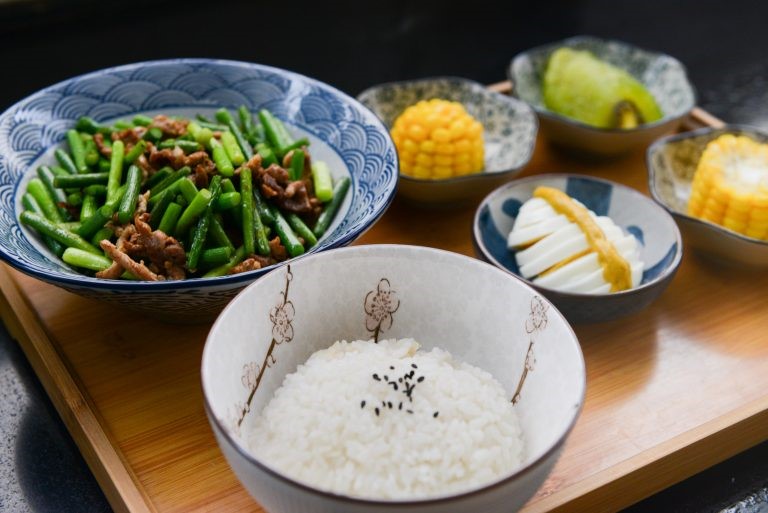
Image CC0 In the Public Domain, by Buenosia Carol, via Pexels.
Avoid These Cereals, Grains, and Bread
Sugary and fried bread won’t kill you once in a while, but they’re not a healthy habit. So go easy on the donuts, and choose whole wheat over white. The same goes for breakfast cereals. Avoid bright colors and sugary coatings. Look for high protein and high fiber content instead.
The Number One Thing To Avoid For Breakfast
Whatever you wind up choosing to eat, avoid skipping breakfast at all costs.
Statistically, people who skip breakfast have higher rates of heart disease, higher blood pressure, and higher cholesterol than breakfast eaters.
So eat your breakfast. It’s good for you.
About The Author:
Kayla Soders is a Digital Marketing Strategist with a passion for food, fun, and fitness. When she isn’t getting fit or eating, she can be found managing popular health sites (such as defendyourhealthcare.us), laughing at memes, or rolling her eyes at minor annoyances. She’s passionate (and a little crazy) when it comes to anything (or anyone) she cares about, with a “Work Hard, Slay Hard” mentality.

